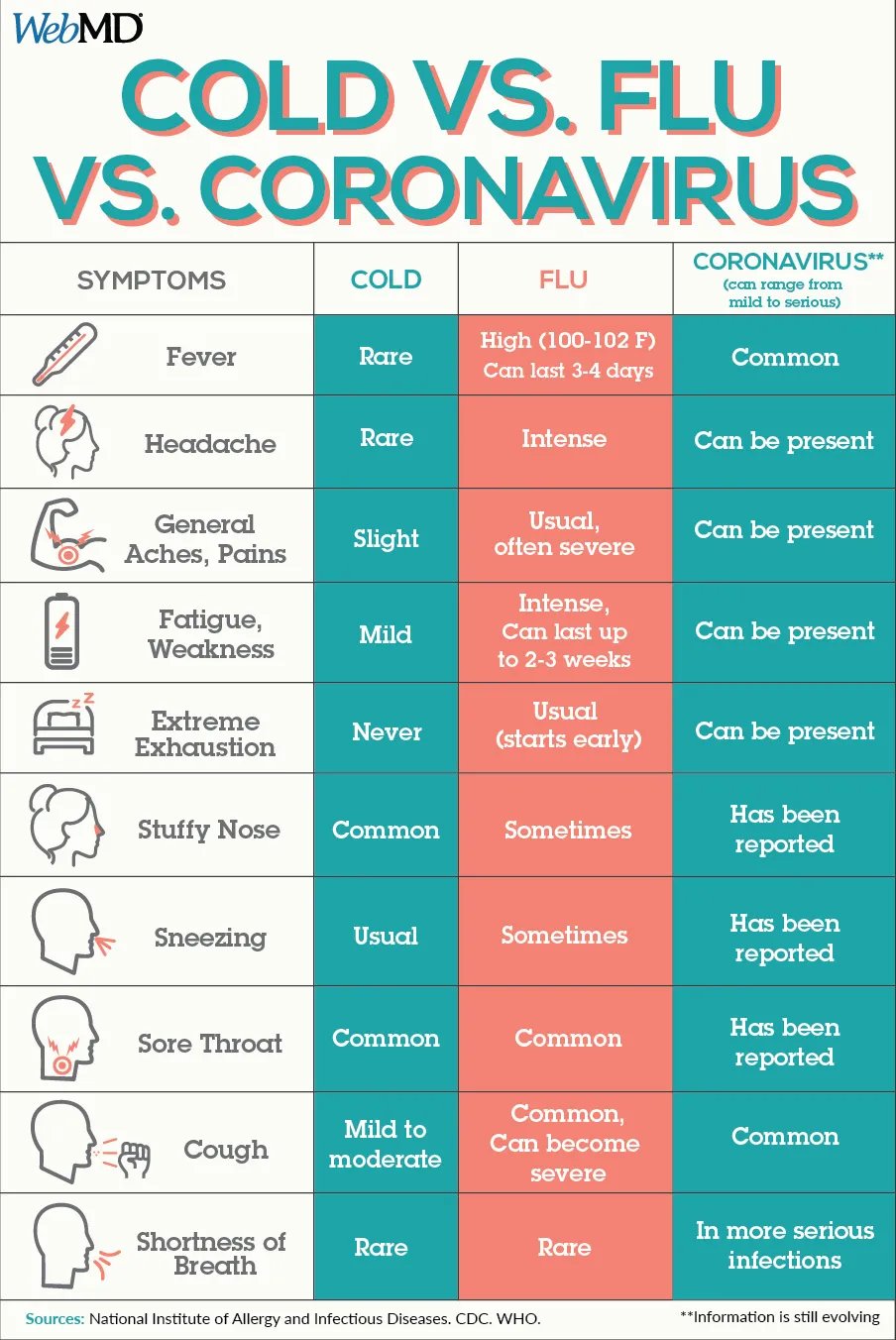Symptoms of COVID-19 (Coronavirus) - With Chart - WebMD
Symptoms of COVID-19 (Coronavirus) - With Chart - WebMD |
| Symptoms of COVID-19 (Coronavirus) - With Chart - WebMD Posted: 10 Mar 2020 12:00 AM PDT Editor's Note: For the latest updates on the 2020 coronavirus outbreak, see our news coverage. March 10, 2020 -- As testing for COVID-19 expands, cases are being picked up across the U.S., confirming what disease experts have predicted: that the virus has been here for some time and is making people sick. That can make the occasional cough or sneeze suspicious. Is this COVID-19? How would you know if you have it? The most detailed breakdown of symptoms of the disease comes from a recent World Health Organization analysis of more than 55,000 confirmed cases in China. Here are the most common symptoms and the percentage of people who had them: COVID-19 is a lower respiratory tract infection, which means that most of the symptoms are felt in the chest and lungs. That's different from colds that bring on an upper respiratory tract infection, where you get a runny nose and sinus congestion. Those symptoms seem to be mostly absent for people with COVID-19, though they're not unheard of. The good news is that in China, most people who have gotten sick -- about 80% -- have had mild to moderate symptoms. Given that, doctors feel that most people in the U.S. will be able to manage their symptoms at home. If you start to show symptoms, call your doctor's office. Don't go there before calling -- that might spread the infection around the doctor's office. They may want to talk to you on the phone in a telemedicine visit.
In a recent press briefing, Nancy Messonnier, MD, director of the CDCs National Center for Immunization and Respiratory Diseases, said the virus spreads easily from person to person and that no one has immunity against it because it is new. "Based on this, it's fair to say that as the trajectory of the outbreak continues, many people in the United States will at some point in time, either this year or next, be exposed to this virus and many will get sick. We do not expect most people to develop serious illness," she said. About 17% of people in China who tested positive for COVID-19 -- about 1 in 5 -- have had severe symptoms, which includes trouble catching their breath, rapid breathing (taking more than 30 breaths in a minute), and low oxygen in their blood. These patients need extra oxygen and sometimes specialized equipment to help them breathe. In China, these patients were hospitalized. About 1 in 20 patients were in critical condition. These patients developed respiratory failure and organ failure. People who seem to be at highest risk for serious illness from COVID-19 are adults over the age of 60, or people who have underlying medical conditions like high blood pressure, diabetes, heart disease, lung disease, or cancer. The highest number of deaths in China -- 22% -- has been in adults over age 80. "This will require you and your family to take action," Messonnier said. She advised taking everyday precautions:
The CDC and the State Department are also urging Americans to avoid cruise ships for the duration of the epidemic, especially if you are at high risk for serious illness. People at high risk should not fly unless it is necessary. |
| You are subscribed to email updates from "phlegm in nose,yellow mucus" - Google News. To stop receiving these emails, you may unsubscribe now. | Email delivery powered by Google |
| Google, 1600 Amphitheatre Parkway, Mountain View, CA 94043, United States | |
 The average time it takes people to get sick after being exposed to the virus is about 5 days. Some people get sick faster, just a day after being exposed, while others don't fall ill for about 2 weeks, which is why the U.S. has quarantined people for 14 days.
The average time it takes people to get sick after being exposed to the virus is about 5 days. Some people get sick faster, just a day after being exposed, while others don't fall ill for about 2 weeks, which is why the U.S. has quarantined people for 14 days.
Comments
Post a Comment